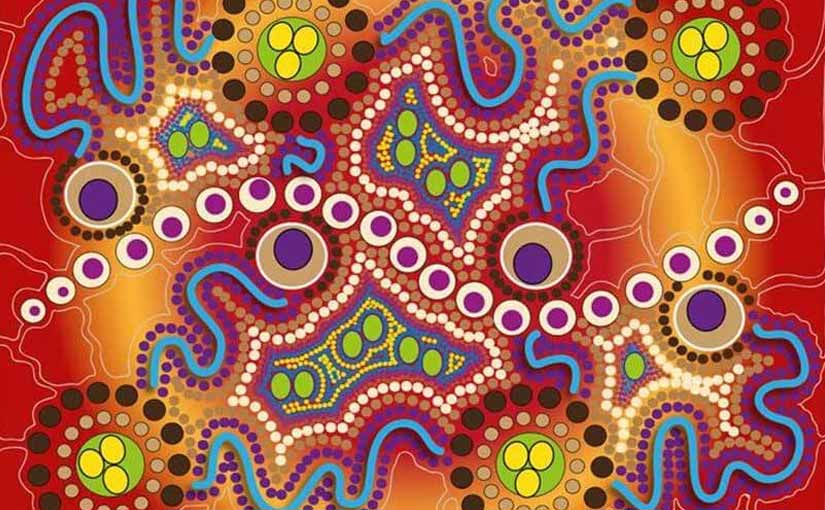Pictured above: In 2011 Jasmine Sarin, a contemporary Aboriginal artist from Illawarra, NSW, was commissioned to prepare a unique piece of artwork depicting the QAAMS Program.
An Australian initiative has helped so many Indigenous Australians better manage diabetes that it has been adopted by several other countries to deliver better healthcare to their Indigenous populations.
The Quality Assurance for Aboriginal and Torres Strait Islander Medical Services (QAAMS) Program addresses the spiraling rate of diabetes among Indigenous Australians.
The rate of diabetes is three to four times higher among this group than the general Australian population. Indigenous Australians also have higher rates of related deaths and complications such as kidney disease and limb amputations.
The QAAMS Program provides on-the-spot blood testing for diabetes. The tests are completed by trained Aboriginal Health Workers using a small, portable device that tests the patient’s level of haemoglobin A1c (HbA1c).
This test can be used to diagnose and monitor the condition. Lower results reflect better controlled diabetes.
Results are returned to the patient within minutes of sample collection. This eliminates the need for travel back to the clinic to collect results for patients who live far from testing laboratories.
A 2014 study in remote Australia found 40 diabetes patients whose HbA1c had dropped more than 1.5% across 15 months since their health services joined QAAMS. Prior to QAAMS the patients had not shown any reduction in their HbA1c.1
To place this in context, a drop of just 1% in HbA1c over five years reduces the patient’s risk of diabetes-related limb amputation by 21%.2
QAAMS began in 1999 with 45 participating Aboriginal medical services. After 17 years of federal funding, the program has overseen the training of more than 1,500 Aboriginal Health Workers and nurses across 200 sites.
Aboriginal Health Workers are central to the program’s enduring success. They ensure that the entire process is performed with scientific accuracy and in a culturally safe manner.
Professor Mark Shepherd manages the QAAMS Program. He says,
“Point-of-care diabetes technology was in its infancy when this program began. QAAMS has shown that, when used with appropriate training, point-of-care testing can significantly help to improve diabetes control in Indigenous populations.”
The group recently received a coveted Projects That Work award from FAIMER International. QAAMS was recognised as one of the top five projects globally out of a field of 100 nominations.
Communities in seven other countries have adopted the QAAMS model in their approach to Indigenous diabetes care; these are South Africa, Canada, East Timor, Papua New Guinea, Western Samoa, the Solomon Islands and Thailand.
Reference:
1. Spaeth BA, Shephard MDS, Schatz S, Point-of-care testing for haemoglobin A1c in remote Australian Indigenous communities improves timeliness of diabetes care. Rural and Remote Health 14: 2849. (Online) 2014
2. The Economic Value of Pathology, CIE & PAA 2016

